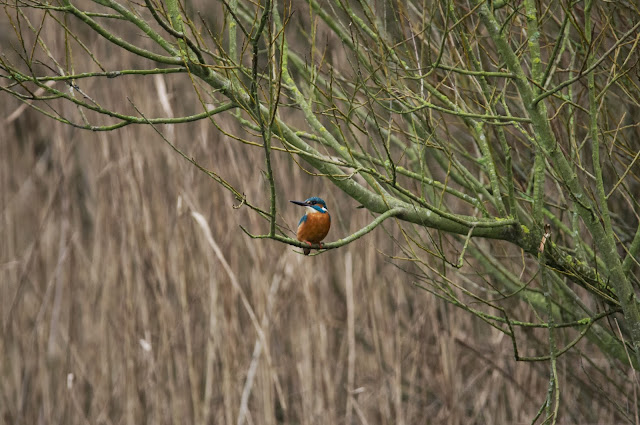In all of my 37 years of living I had never seen the elusive Bittern. This in part is down to the main fact I had never been to locations where they inhabit! But back in January this was to change. And as the saying goes "just like buses, two come along" well in this case 3 for me. Although technically it was the same bird I believe seen on 3 separate occasions within the 3 or so hours at Dungeness RSPB reserve. I stretch the truth a bit as also the first glimpse of a Bittern was at the Stodmarsh reserve. I say glimpse, as it literally was as it flew in the distance.
Back to Dungeness. My father and I were sat chatting to others in the hide about a Kingfisher that we has missed by 30 minutes or so. Then luckily with my camera out and ready, a Bittern flew over and landed in the Reeds some 100ft away in front of us.
 |
| First capture |
 |
| Swinging round to land |
Sometime later, in the area it landed it appeared at the top of the reeds. A behaviour that is rare according to the other wildlife lovers in the hide. The bird stayed there for only about 3 minutes then took off and landed in a small island right out in the lake out of sight. The next sequence shows this.
After it disappeared I had resigned to the fact one would not be seen again this day. My anguish was dispersed off by the re-arrival of the the blue and orange flash of a male Kingfisher. Just in the edge of the wooded bit to the right and only some 20ft away, he appeared and dived several times and then perched further in. Then as luck would have it, he flew out onto an exposed branch overhanging the water, thus providing the perfect hunting spot. In total he spent over an hour on this perch and caught at least 7 unlucky small fish. He even had a little friend at one point in the form of a Great Tit. This helps to give a sense of scale of the Kingfisher.
 |
| Posing for the cameras |
 |
| With fish |
 |
| You got a friend in me! |
This friend came a lot closer to us, feeding on Bullrush seeds.
After this second highlight of the day, they say things happen in 3's! well it turned out to be the case. The Bittern returned to the same area as seen above. This time staying hidden, until, a patrolling Marsh Harrier flew nearby and spooked the Bittern to fly out and crash land in the water. These are a bird that does not swim on water as the wade at the edges, so for this to happen could prove serious for the bird. As luck has it I have the sequence of it from just landing in the water through to it struggling to escape the clutches of the water and return to dry land. I have only included a snapshot few as some were of similar look.
As the sequence depicts, the Bittern really struggles to make it back. The energy and power it uses to make it back is really evident in these. It uses the wings as paddles, lifting it up and providing forward motion. I have revisited on two more occasion this year and not seen any Bitterns, although one trip provided action for my "Battle of the Coots" blog previously published.






























